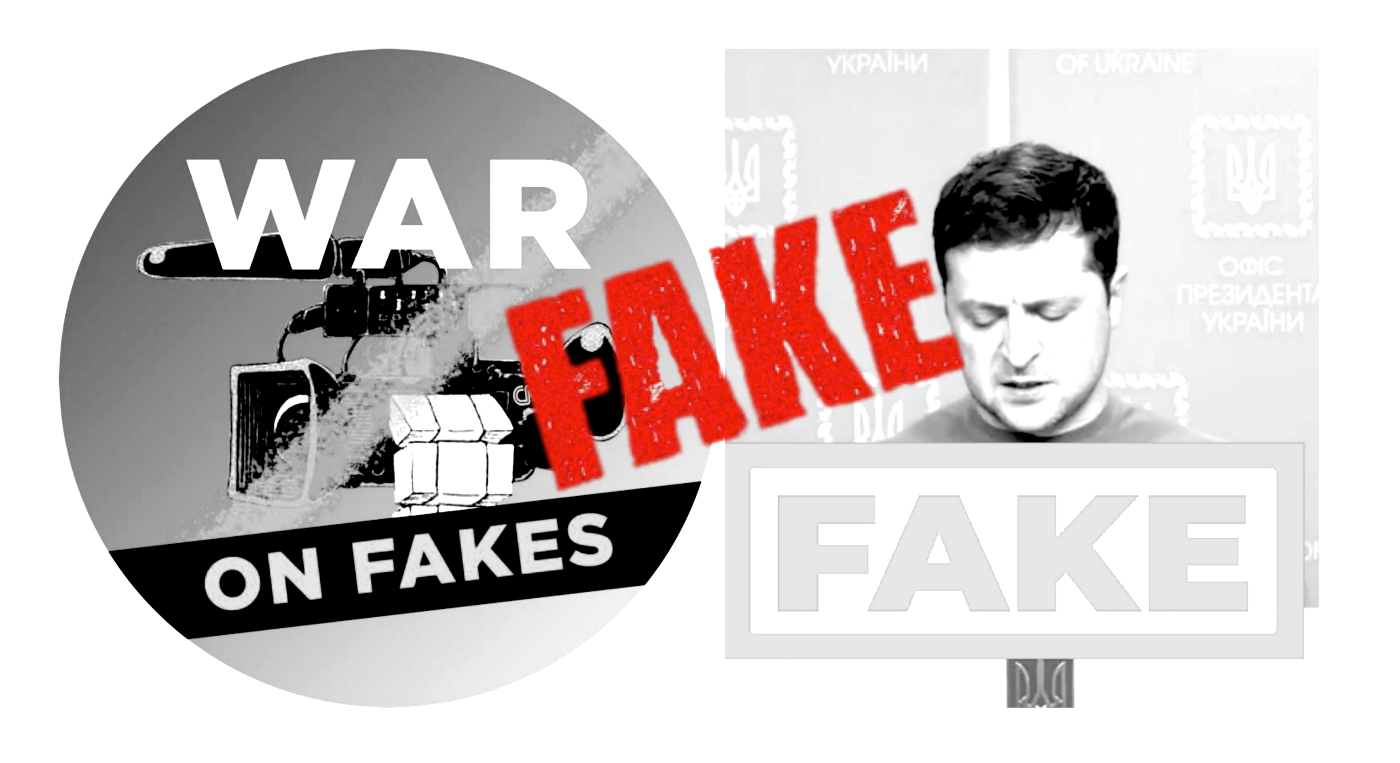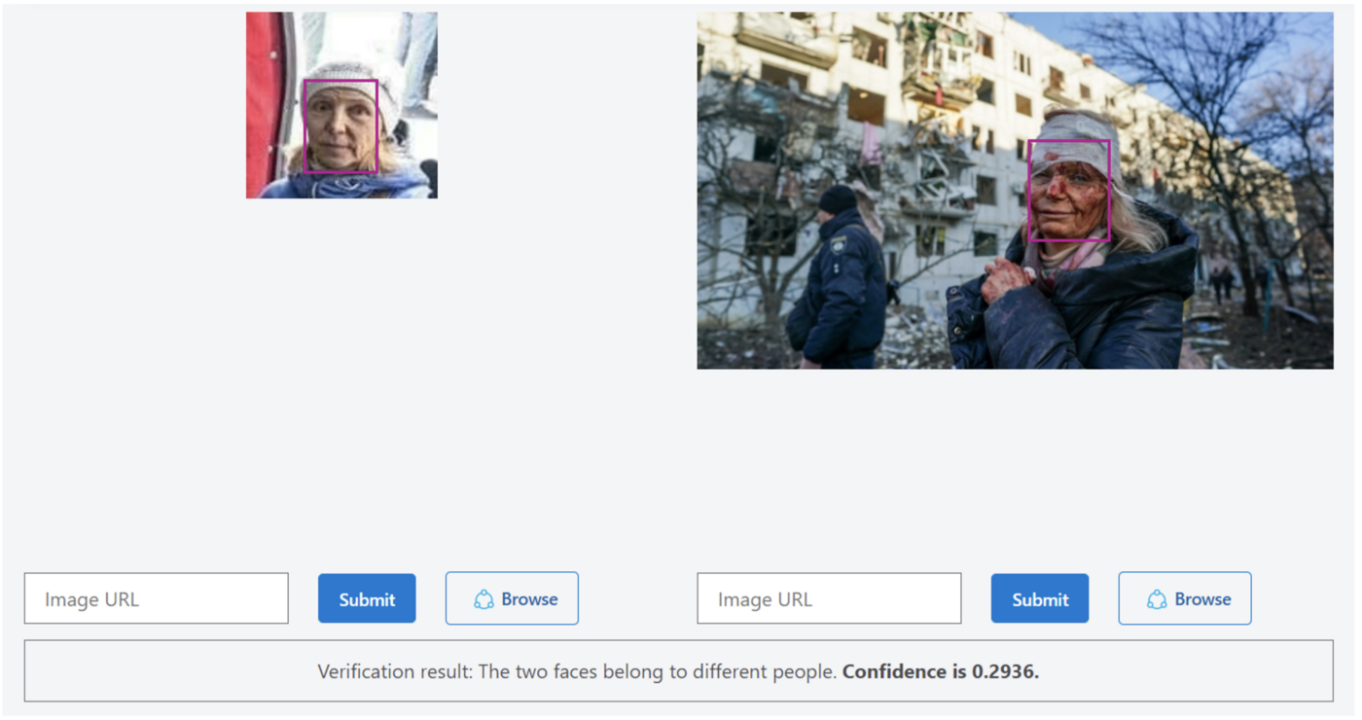Russian Telegram channel embraces fact-checking tropes to spread disinformation
The War on Fakes Telegram channel pushes false and misleading content in defense of Russia’s invasion of Ukraine.
Russian Telegram channel embraces fact-checking tropes to spread disinformation

BANNER: The War on Fakes Telegram channel (left) uses common fact-checking tropes, such as stamping images with the word “FAKE” in large red letters (right) to convey a sense of legitimacy. (Source: DFRLab via WarOnFakes.com/archive)
On February 23, 2022, the Telegram channel Война с фейками (“War on Fakes”) first appeared online, ending its first day with a modest 161 subscribers. It quickly skyrocketed; within two weeks, War on Fakes grew to over 625,000 subscribers and is now one of the top Telegram channels in Russia, with a reach of more than 30 million daily views. The channel, which presents itself as debunking the “information war against Russia,” spreads disinformation and propaganda under the façade of a fact-checking service. Its staggering growth since its inception indicates it may be gaining traction more broadly, including through the publishing of an English-language website.

The War on Fakes’ operators describe themselves on its English-language website as “the owners and administrators of several non-political telegram channels.” They continue, “We don’t do politics. But we consider it important to provide objective information about what is happening in Ukraine and the territories of Donbass, since we see signs of an information war launched against Russia.” This introduction is intended to present War on Fakes as an objective source for fact-checking mis- and disinformation about the Russia-Ukraine conflict, despite its extreme pro-Russia bias.
A pinned post to the Telegram channel points toward a Russian version of website, xn — 80aaenqccitej3b1b.xn — p1ai. The DFRLab is not linking directly to the webpage because Microsoft Edge and Firefox malware detectors both warn that the site is malicious.

A scan of the channel’s posts makes it clear that War on Fakes is not objective, instead pushing content to support narratives echoed by Russian state media and the Kremlin. Its commentary refers to the war in Ukraine exclusively as the “special operation in Ukraine” (“спецоперация в Украине”), following Kremlin policy to not refer to the situation as a “war” or “invasion.” Although not all of its posts are completely falsified, they use alternative explanations to spin context, question facts, and promote wild suggestions of hired actors and staged atrocities — all common tactics in Russian influence operations and propaganda.
The channel has started to receive some attention from mainstream Russian propaganda outlets, such as RT and RIA Novosti. For instance, RT cited War on Fakes on February 27 in a Telegram post that claimed a heavily circulated photo of a Ukrainian civilian injured during a Russian airstrike in Chuhuiv was likely faked, and that the same woman was photographed two days later with no injuries. This was also reposted by Vladimir Soloviev, a well-known Russian journalist and propagandist.
The claim that the photo is staged has been debunked, as metadata showed that the picture was in fact taken on the day of the Chuhuiv airstrike; the photographer is a well-respected photojournalist; and the woman herself, Olena Kurilo, spoke out after the event, showing the same injuries as those in the original photo.

The DFRLab subsequently ran the image provided by War on Fakes through Microsoft Azure’s Face Verification tool, which uses facial recognition algorithms to determine the likelihood that two faces are the same person. When an original photo of Kurilo is compared with the photo that War on Fakes claims is also her, it provides a 29 percent confidence that these photos are the same person. This is a considerably low score, even taking into account that one of the images includes facial injuries, suggesting that while these two may look alike, it is highly unlikely that the person in the original photo is Kurilo.

War on Fakes makes hundreds of other highly controversial claims, including that the corpses seen in photos of an attack on a Kyiv TV tower may have been brought in from a nearby morgue. (Warning: the footage is extremely graphic.) Another post rebutted Bellingcat’s research on cluster munitions being used by the Russian military and implied that Ukraine carried out these attacks on its own residential areas.
Despite the propagandistic quality of its content, the channel has gained significant traction domestically in Russia, and continues to be amplified by prominent Russian outlets. It was heavily amplified on the Telegram channels of key figures and outlets in Russian media, including RT, RIA Novosti, RT Editor-in-Chief Margarita Simonyan, and propagandist Vladimir Soloviev, in some cases as soon as the day after its launch. It received a further boost when it was recently promoted by the Russian Foreign Ministry. As each of these channels have hundreds of thousands of followers, it is likely that much of War on Fakes’ growth resulted from their amplification, which in turn allowed those channels to use War on Fakes’ “objective” analysis to counter any news coming out of Ukraine that might negatively impact public opinion in Russia. War on Fakes’ posts have now been cited as legitimate fact-checks on hundreds of Russian media sites, including RT on multiple occasions.
War on Fakes is now attempting to expand through multiple region-specific channels and translations of its website into French, Spanish and Chinese. It now has Telegram channels dedicated to Belgorod, Rostov, Kalmykia, Crimea and Sevastopol, Voronezh, a look-alike account, and a reserve account in case the original is taken down. These accounts have significantly fewer followers, but the flagship War on Fakes account continues to expand their reach by tagging them in Telegram posts.
At this time, it cannot be said with certainty who is behind the War on Fakes, but its sudden growth and widespread support across Kremlin media raises questions about its operation. The channel’s extraordinary growth rate, amplification by key Russian media figures, use of conventional Russian influence tactics, and clear goal of maintaining popular support for Russia’s invasion of Ukraine all hint that its operators may be either affiliated with the Kremlin, or have the resources and incentive to carry out an influence operation in support of it.
Cite this case study:
Ingrid Dickinson, “Russian Telegram channel embraces fact-checking tropes to spread disinformation,” Digital Forensic Research Lab (DFRLab), March 7, 2021, https://medium.com/dfrlab/russian-telegram-channel-embraces-fact-checking-tropes-to-spread-disinformation-c6a54393c635.

